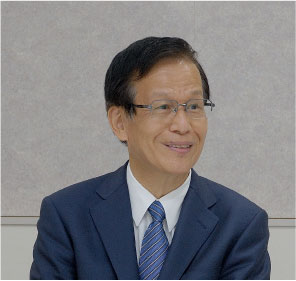about us

About Osaka Bio Headquarters
Osaka Bio Headquarters is a unified initiative of industry, academia, and government in Osaka, aiming to further advance the health and medical industries within the prefecture.
Member Organizations
- Ibaraki City
- National Institutes of Biomedical Innovation, Health and Nutrition
- University Public Corporation Osaka
- Osaka Business Development Agency
- Osaka City
- Osaka Chamber of Commerce and Industry
- The University of Osaka
- Osaka Prefecture
- Kansai Pharmaceutical Manufacturers Association
- Kyoto Research Park Corp.
- Kinki Bureau of Economy, Trade and Industry
- Kinki Bio-Industry Development Organization (NPO)
- KENTO Co-Creation Promotion Organization
- National Cerebral and Cardiovascular Center
- Saito (International Culture Park City) Development Promotion Council
- Senri Life Science Foundation
- Urban Innovation Institute
- Organization for Small & Medium Enterprises and Regional Innovation, JAPAN
- Japan Agency for Medical Research and Development
- Bio-Site Capital Co., Ltd.
- Mitsui Fudosan Co., Ltd. (LINK-J)
- Organization of Future Medicine
- RIKEN
Vision
Transforming Osaka into a global cluster for health and medical industries
Leveraging the strengths of industry, academia, and government collaboration in the life sciences field, we aim to drive innovation in areas such as pharmaceuticals, medical devices, regenerative medicine products, and evidence-based health-related products and services. Our goal is to position Osaka as a key growth engine for Japan, supporting and leading the nation’s future as one of the two economic hubs in Japan.

Osaka Bio Headquarters
Representative: Shizuo Akira
History of Life Sciences in Osaka
Edo Period
Osaka, in particular the neighborhood of Dosho-machi neighborhood had a monopoly on the distribution of medicines and it was referred to as a “town of pharmaceutical”.
Around 1975
Osaka University President Yamamura (at that time) announced the concept of making “North Osaka a base of life science and developing bio hills”.
Jul-1977
National Cardiovascular Center (currently National Cerebral and Cardiovascular Center) (Suita City) was established
Apr-1993
Osaka University School of Medicine and Hospital relocated from Nakanoshima in Osaka City to the current location (Suita Campus) that was newly constructed. It was integrated with the Research Institute for Microbial Devices Hospital.
Apr-2004
Opening of Saito Life Science Park
Apr-2005
National Institutes of Biomedical Innovation (currently National Institutes of Biomedical Innovation, Health and Nutrition) was established (Saito, Ibaraki City)
Sep-2008
Osaka Bio Headquarters organization structure was built.
“Osaka Bio Strategy” was formulated at the” Osaka Bio Strategy Promotion Council” organized by Industry, Academia and Government
Oct-2013
Pharmaceuticals and Medical Devices Agency(PMDA)Kansai Branch was established(Kita-ku, Osaka City)
Apr-2015
Japan Agency for Medical Research and Development (AMED) Department of Innovative Drug Discovery and Development West Japan head office was established(Kita-ku, Osaka City)
Jul-2015
Name of Suita switching yard and surrounding area (medical cluster) where National Cerebral and Cardiovascular Center would relocate is decided as “Northern Osaka Healthcare City (popularly referred to as Kento)”
Mar-2018
With the completion of “Osaka Bio Strategy”, we summarize initiatives for 10 years.
“Health and medical industries” is positioned as a field to newly emphasize “Osaka growth strategy”, and set up “Global cluster formation” of that industry as a direction to aim.
Jul-2019
National Cerebral and Cardiovascular Center was relocated in KENTO.
Sep-2022
Japan Agency for Medical Research and Development (AMED) Department of Innovative Drug Discovery and Development West Japan head office was relocated in Chuo-ku,Osaka City
Mar-2023
National Institute of Health and Nutrition was relocated in Kento from Shinjuku,Tokyo.
Jun-2024
Nakanoshima Grand opening of Nakanoshima Qross
Dec-2024
Pharmaceuticals and Medical Devices Agency(PMDA)Kansai Branch was relocated in Nakanoshima Qross